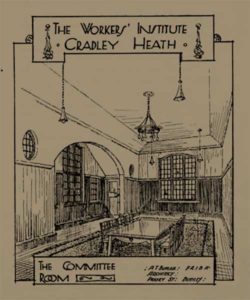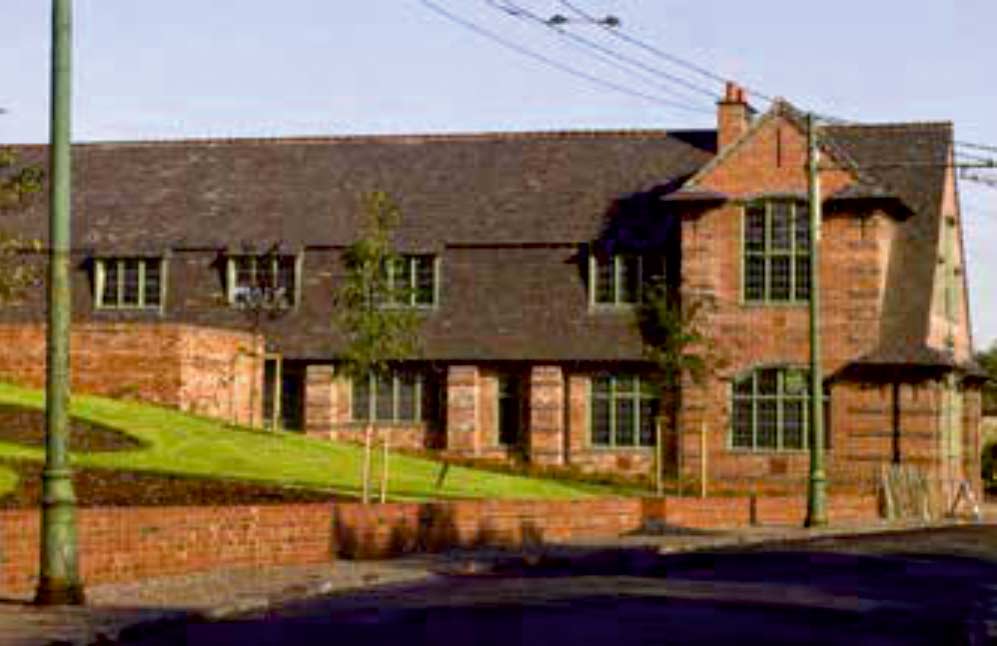
Drawing of WI from an original leaflet found as part of the WI archive collection.
When the strike was won there was still £1,500 in the fund. Mary Macarthur proposed that, to recognise the women’s achievements, the surplus should be used to build a ‘centre of social and industrial activity in the district’ which was to be the Cradley Heath Workers’ Institute.
The site chosen for the building was a spoil heap in Lomey Town, Cradley Heath, the venue for many rallies during the lockout.
Construction of the Institute, a two-storey building designed by the Black Country architect Albert Thomas Butler, began in the winter of 1911. On June 10 1912, thousands of local people turned out to see the Countess of Dudley officially open the new building – which in its style and design was unique in the Black Country. It was described as ‘a queen among beggarmaids’ by Philip Snowden, future first Labour Chancellor of the Exchequer.
The Workers’ Institute was used for educational meetings as well as social gatherings and as a trade union centre which dispensed advice on employment matters and benefits. The Workers’ Institute remained a focus of community life over the years. Between 1915 and 1933 its auditorium operated as a picture house and was better known by locals in the area as ‘The ’Stute’. The cinema was later transformed into a snooker hall until the 1950s when the Post Office used it as a sorting office up to 1995.
In the 1940s the first floor committee room was also used as a dance academy, while for much of its history the building’s offices were used by the Chainmakers’ and Strikers’ Association and by the National Union of General and Municipal Workers (now GMB), as well as a local solicitor.

The Cradley Heath Workers’ Institute today, having been re-sited at the Black Country Living Museum in a 1930s-themed street.
In 2004, the Workers’ Institute was threatened with demolition because of a planned by-pass. Sandwell Metropolitan Borough Council approached the Black Country Living Museum which, with the local community, including the TUC Midlands and local trade unions, launched a campaign to save the building. Supporters were invited to sponsor a brick and in 2006 the Heritage Lottery Fund awarded the Museum a £1.535 million grant to take the building apart brick by brick and rebuild it at the Museum site in Dudley. As theMuseum’s director and chief executive, IanWalden, said: ‘The Heritage Lottery Fund’s decision ensures this historic building has a promising future – one that fulfills MaryMacarthur’s original vision.’
Until the campaign to save the Institute, the story of the Cradley Heath strike was, sadly, largely forgotten, but in 2005 the Museum,
in association with the TUC Midlands and many unions, held the first Chainmakers’ Festival.